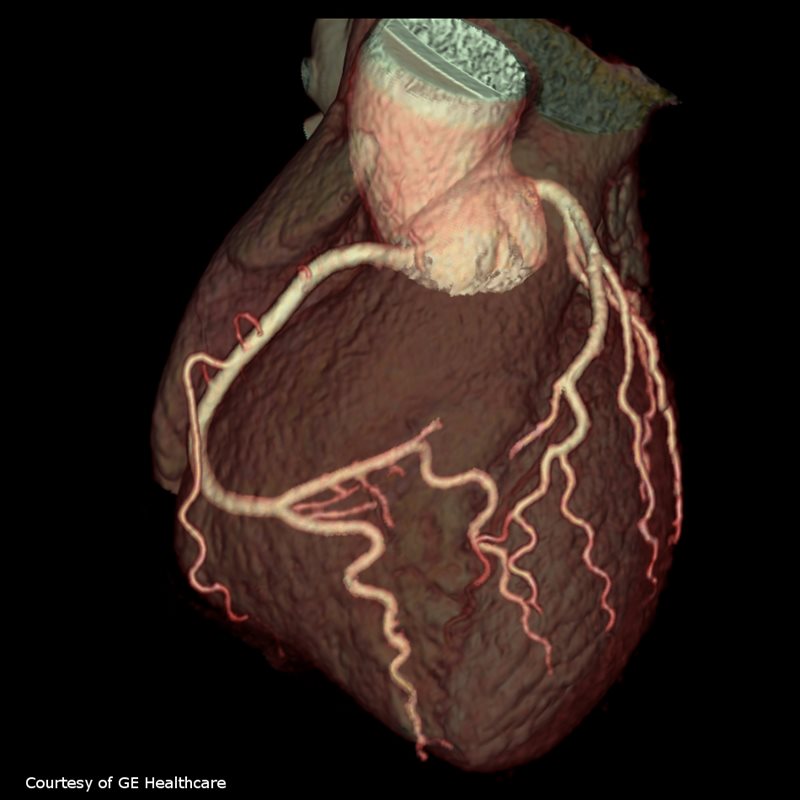DL Algorithm Accurately Quantifies Coronary Artery Calcium from CTA Images
 A retrospective study published in Radiology reports that a deep-learning (DL) algorithm automatically and accurately quantified coronary artery calcium (CAC) from CT angiography (CTA) images and categorized patient risk.
A retrospective study published in Radiology reports that a deep-learning (DL) algorithm automatically and accurately quantified coronary artery calcium (CAC) from CT angiography (CTA) images and categorized patient risk.
Noncontrast CT is typically used to quantify CAC prior to a CTA exam, due to the hyperattenuating appearance of a contrast material–filled artery, which makes it challenging to extract the CAC region at CTA. Obtaining CAC from the contrast-enhanced CTA exam would reduce radiation exposure for these patients.
The study evaluated the DL method on 240 patients undergoing CTA to automatically quantify CAC scores. Virtual noncontrast scans along with CTA scans obtained with spectral CT were used to determine the reference calcium region masks in the training set using an automatic initial mask followed by expert review. Although the noncontrast scans from 365 patients were used to develop the algorithm, it was only tested on contrast-enhanced coronary CTA exams with spectral postprocessing.
According to the authors, the correlation between the noncontrast CT CAC score and the DL-based calcium scoring was excellent, showing great consistency for both inter- and intraobserver readings. As important, “validation on 240 independent CTA scans from three different scanners showed excellent positive correlation,” the authors noted, with the resulting risk categorization correct for 93% of the patients (223 of 240). “The difference between the deep learning CTA and the semiautomatic noncontrast CT CAC risk catego-ries was never more than 1. The difference from the reference Agatston score was also robust, showing no statistical difference (P > .05) with regard to scanner, sex, and section thickness,” the authors wrote.
